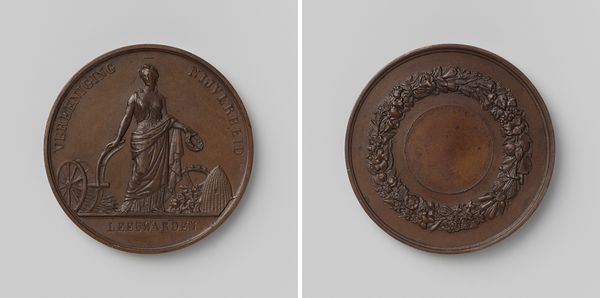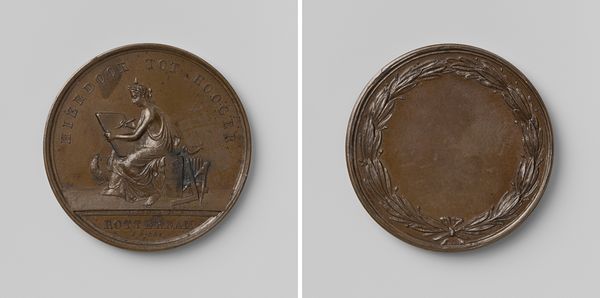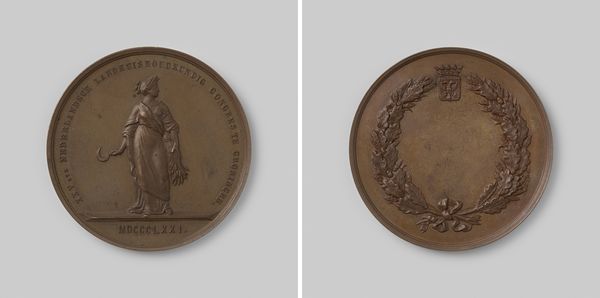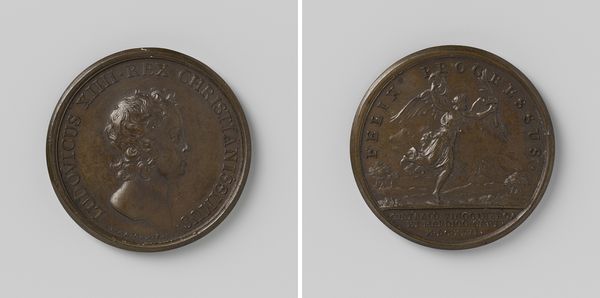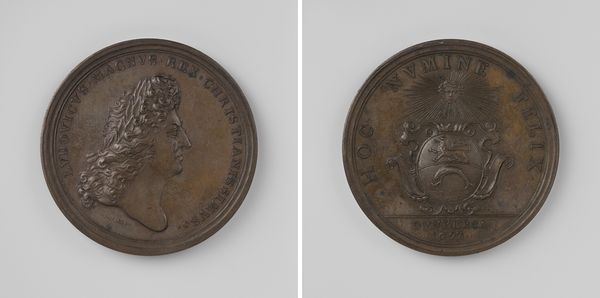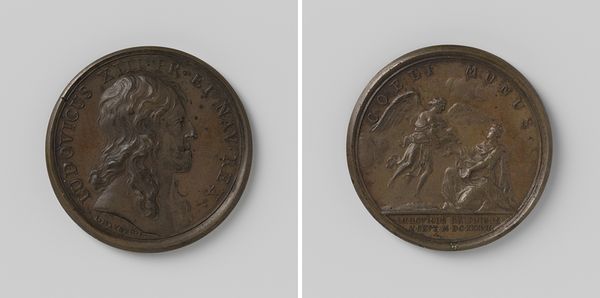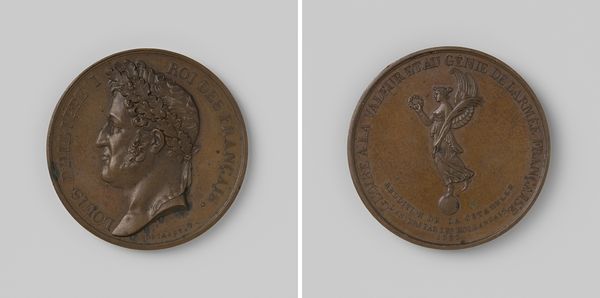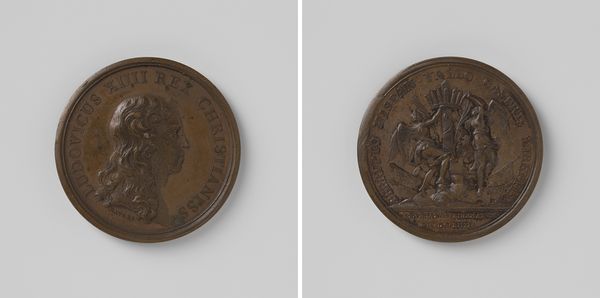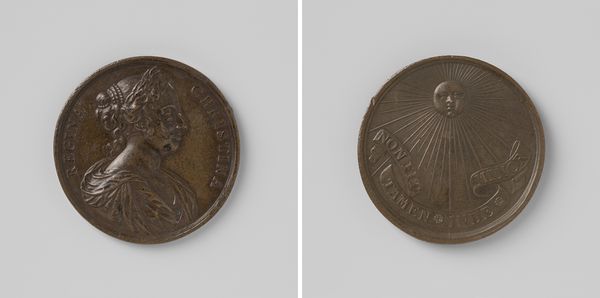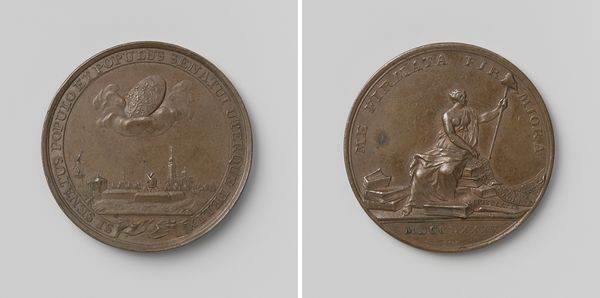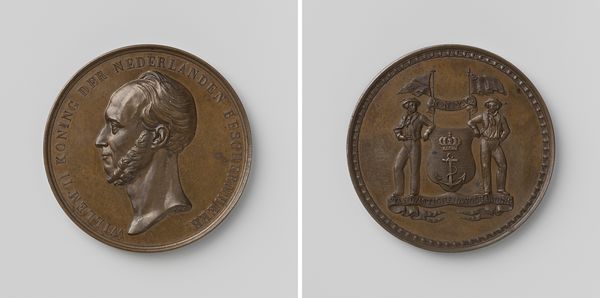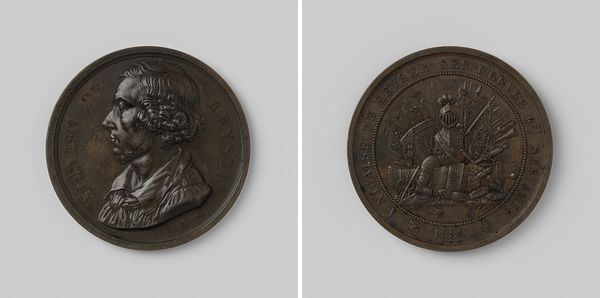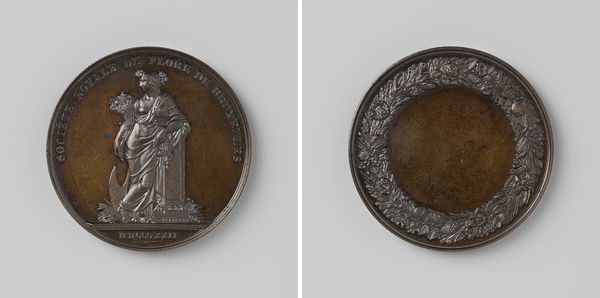
relief, bronze, sculpture
#
portrait
#
medal
#
relief
#
bronze
#
sculpture
#
ceramic
#
decorative-art
Dimensions: diameter 3.8 cm, weight 29.34 gr
Copyright: Rijks Museum: Open Domain
Curator: Today we're looking at "Stad Maastricht," a bronze relief created by Constant Jéhotte between 1847 and 1853. What's your first take on this, looking at the imagery? Editor: I'm immediately struck by its formality and weight. The material—bronze—and the imagery combine to evoke a strong sense of civic pride and perhaps even a bit of old-world power. It’s imposing, wouldn’t you say? Curator: Absolutely, it speaks volumes about civic identity. Note the figure of the angel, a clear symbolic choice of protection and perhaps divine right, holding the coat-of-arms which is front and center in the composition. How do you read its symbols in relation to the sociopolitical landscape of the time? Editor: Well, the angel is interesting, quite classical in its depiction, but then we have this central star. In iconography, stars often represent guidance, destiny, or even heavenly mandate. The combination is what intrigues me—the celestial and divine guiding a city’s earthly affairs. It hints at a very specific worldview. Curator: Indeed. Jéhotte created this relief during a time of significant social change in Europe. Maastricht, as a city, was navigating its role in a newly formed kingdom. So this piece, commissioned, no doubt, by the city, would likely have served as a tool for constructing a cohesive civic identity, rooted in history but also looking toward the future. How does the reverse play into this? Editor: The wreath on the reverse evokes a sense of victory or honor, almost like a laurel wreath bestowed upon a champion. Together with what appears to be arrows, the implication would lean into that theme of being "rewarded" through triumph in combat and conquest. Perhaps hinting at the cost and difficulties experienced by the citizens, giving this civic point of pride additional dimension. Curator: And we must remember, Maastricht has a long military history. But by framing it with natural elements—the leaves—there's also a sense of organic growth, suggesting prosperity and enduring legacy alongside a warrior's strength. Editor: Yes, a layered reading becomes possible, with the military defense as a historical, yet resolved reality, which in turn produced flourishing developments represented by the oak leaves. Curator: Examining such pieces not only provides us an important insight into the mindset and ideologies that informed that particular historical moment, but also an indication of collective identities as works of art often became instrumental to social unity. Editor: Exactly. It’s a potent reminder of how intertwined visual language is with cultural identity and societal aspiration, and that echoes even today.
Comments
No comments
Be the first to comment and join the conversation on the ultimate creative platform.
